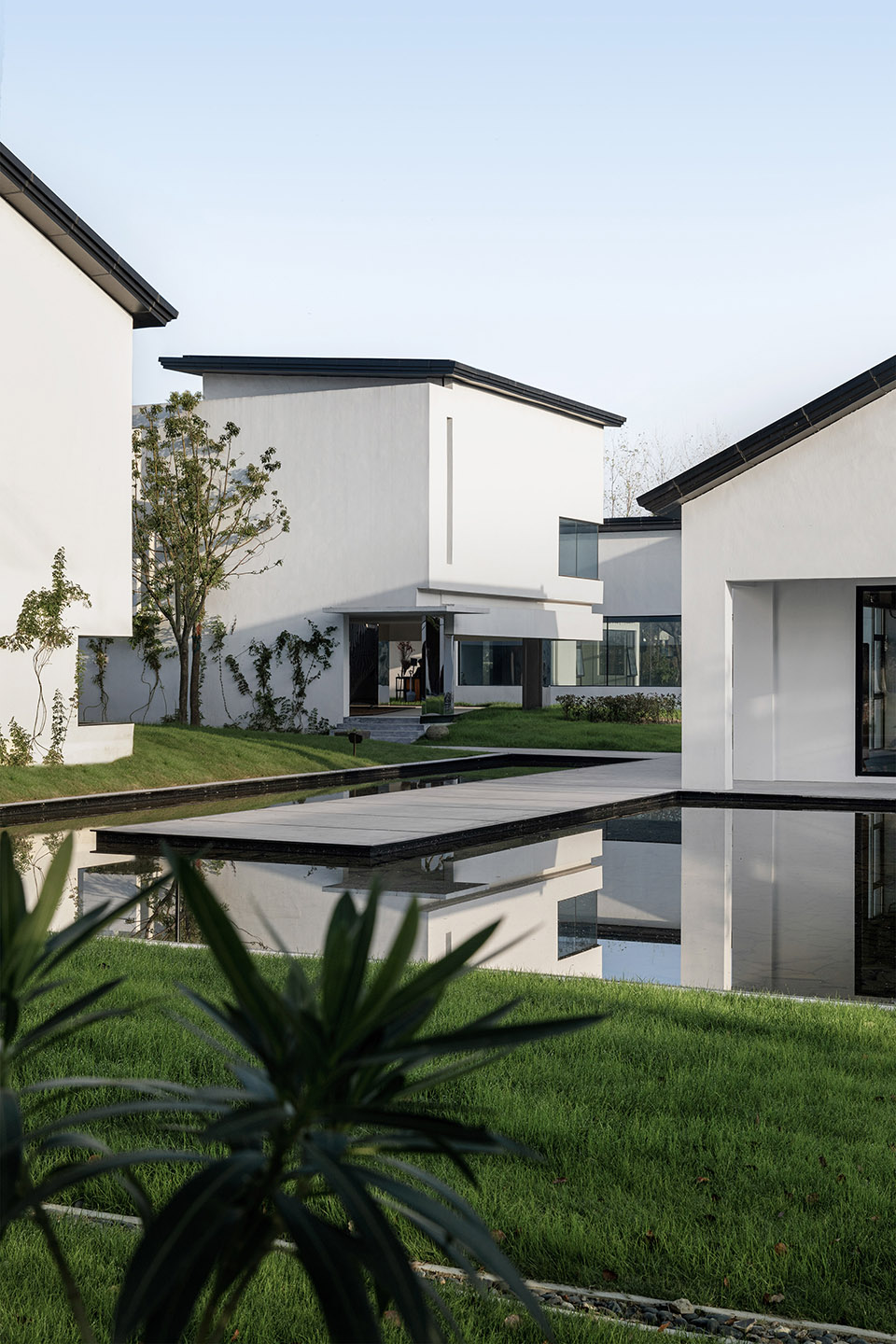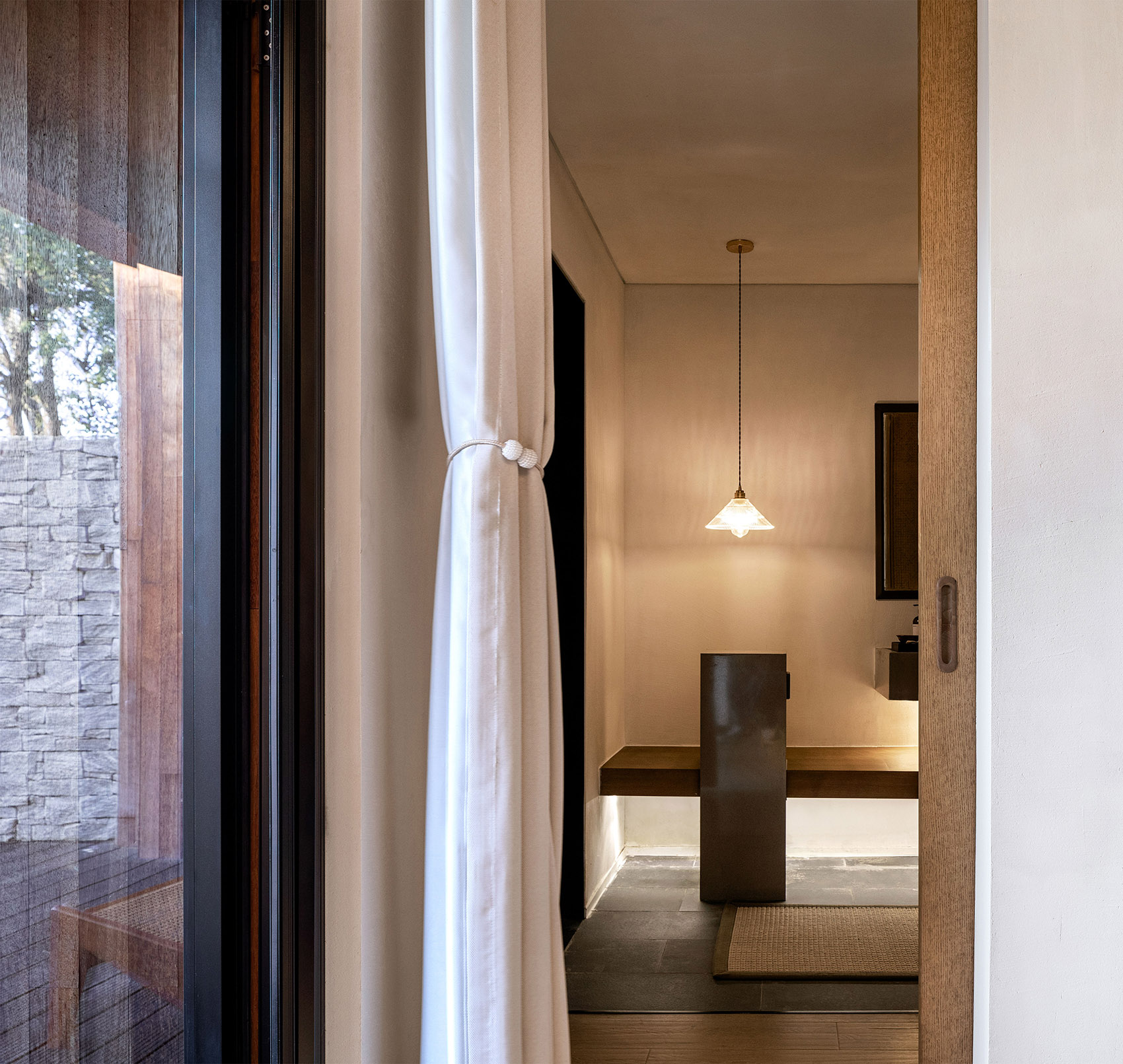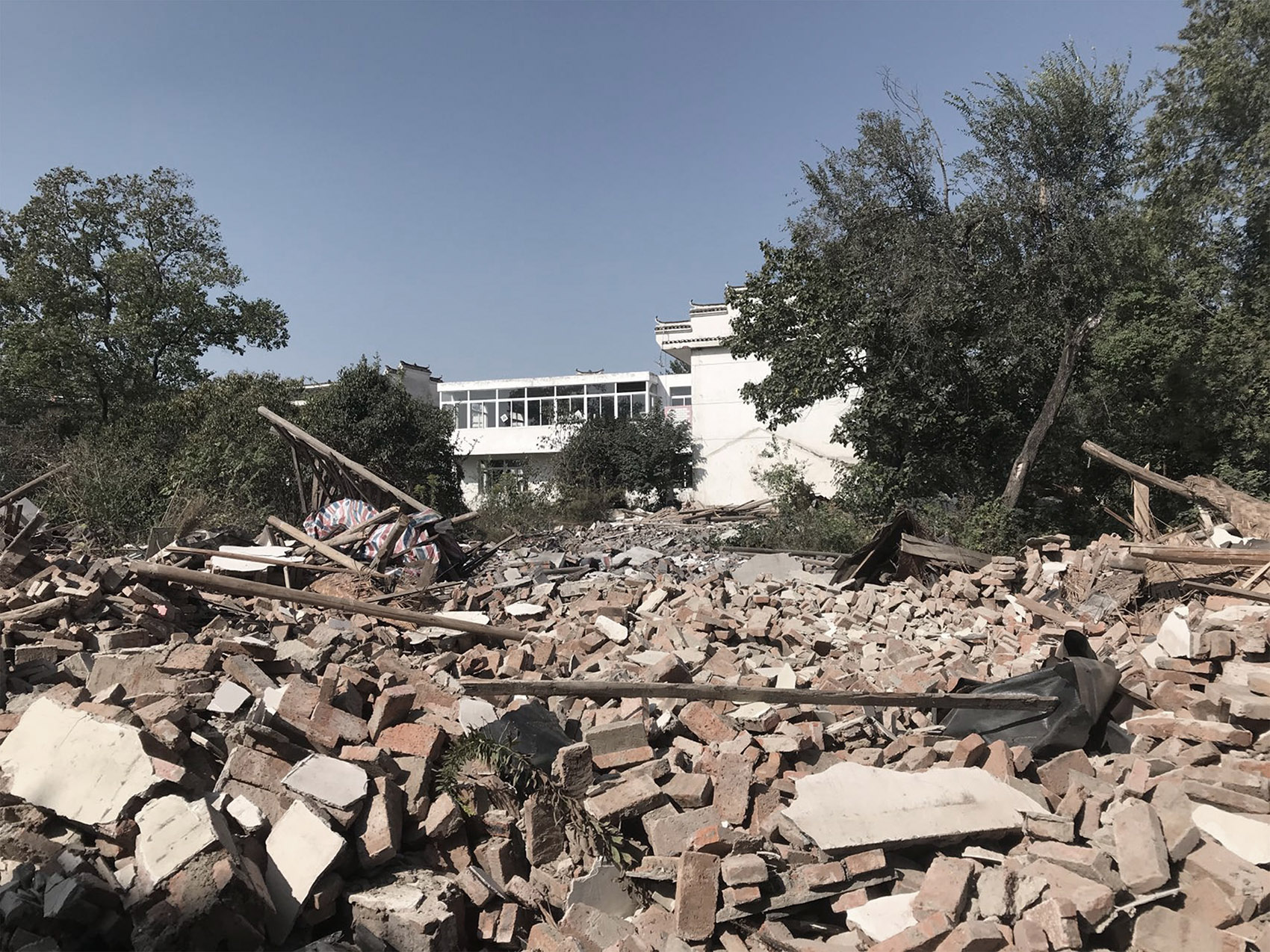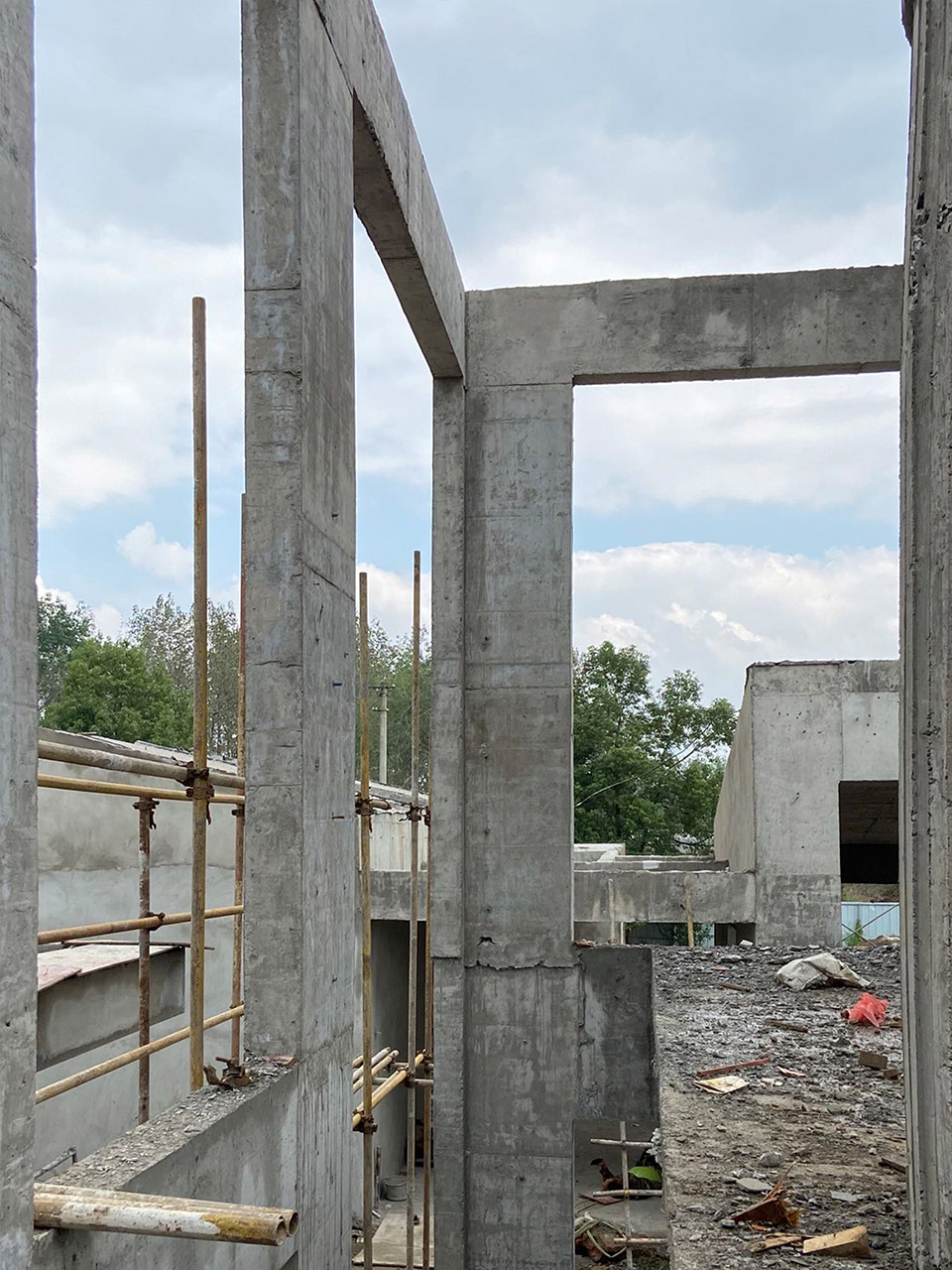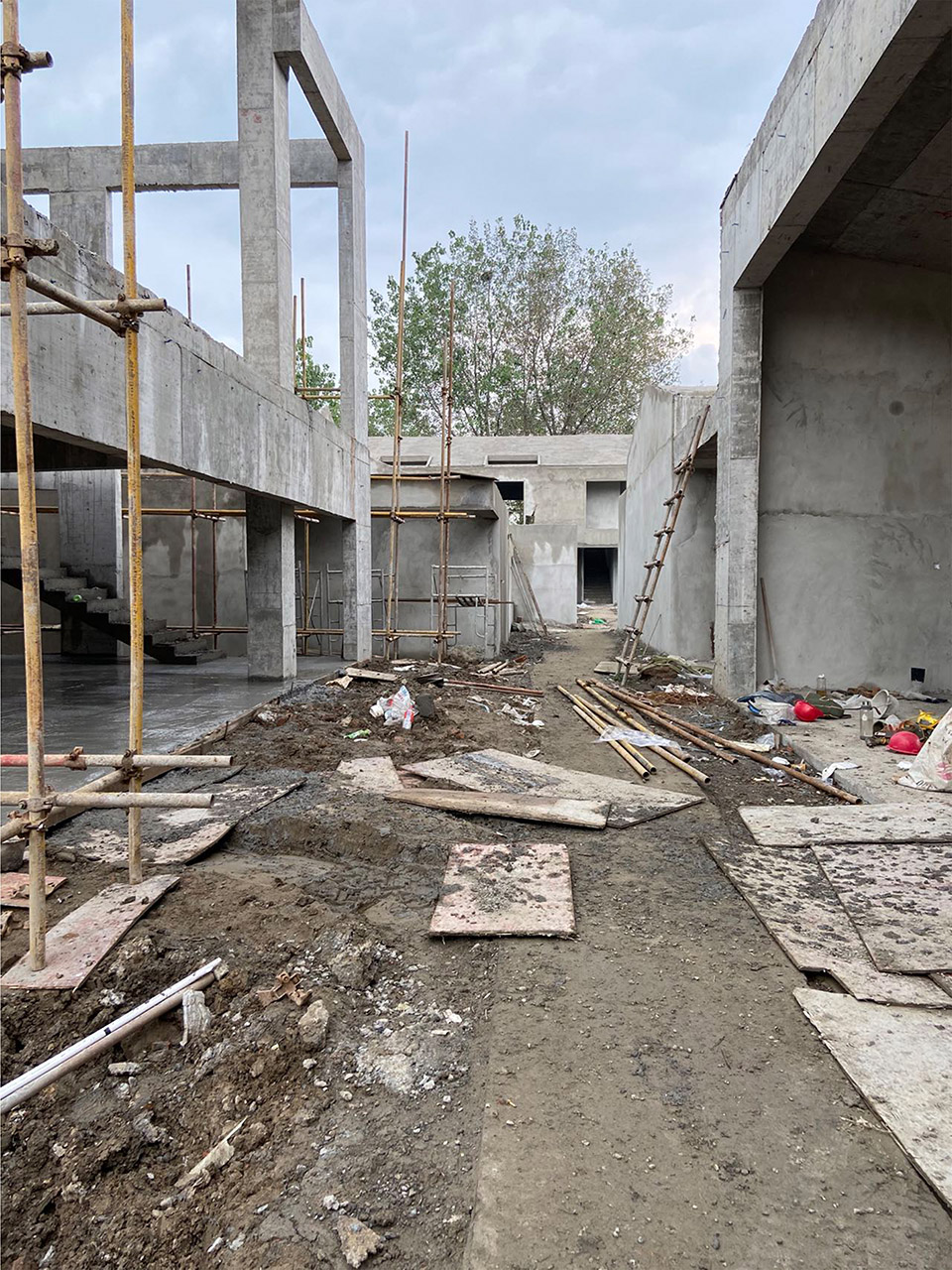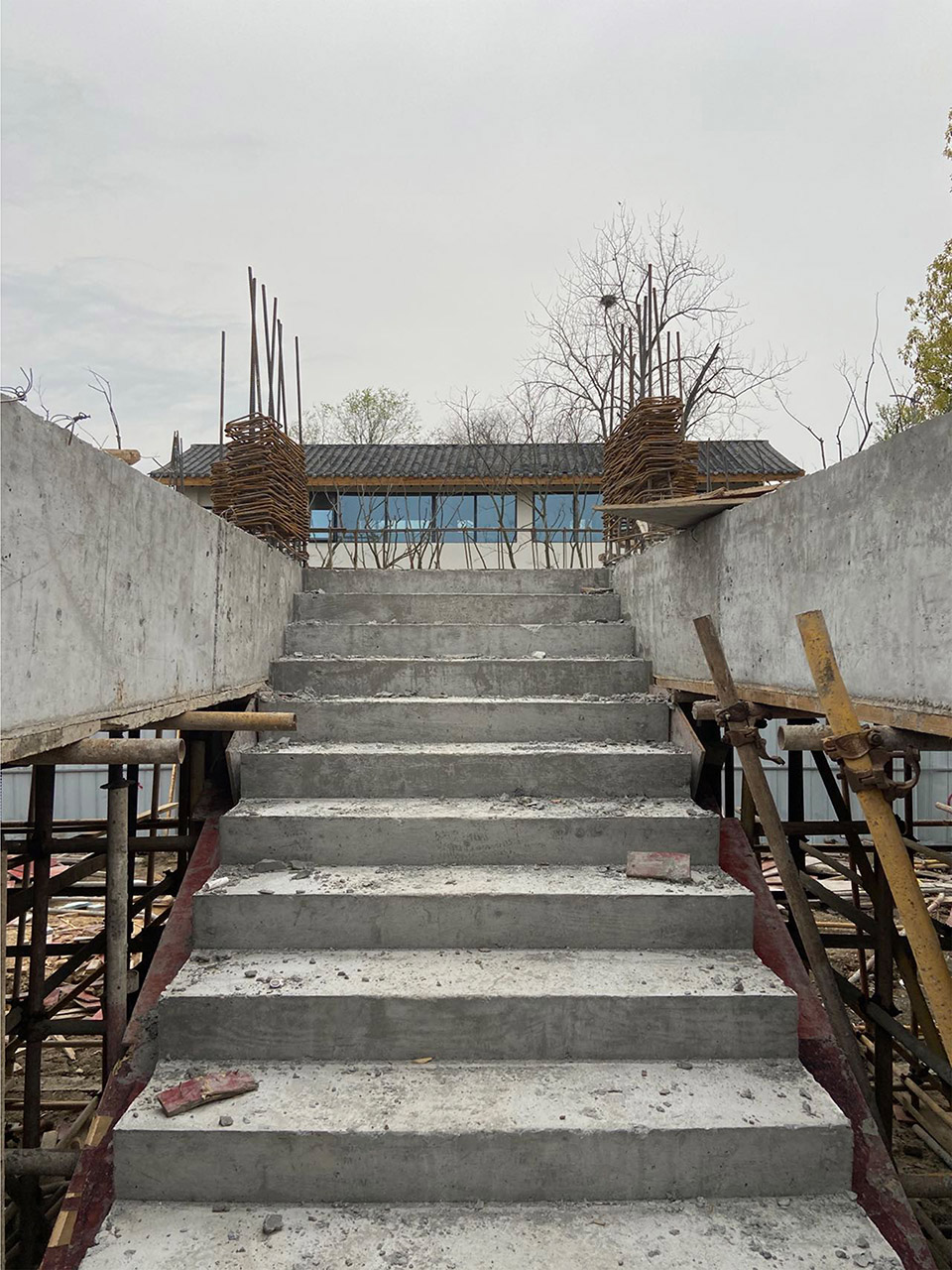随着城镇化进程的发展,当今城市形象变化巨大,但同时伴随了乡村逐渐失去活力,出现了大量的“空心村”。圩美磨滩民宿项目是一个空心村再生实践项目,位于安徽省合肥市包河区大圩镇,北临淝河湿地公园,东临巢湖,四周农田环绕。
With the development of urbanization, the image of today’s cities has changed tremendously, but at the same time, along with the gradual loss of vitality in the countryside, a large number of “hollow villages” have appeared. The Weimei Motan B&B project is a hollow village regeneration practice project, located in Daxu Town, Baohe District, Hefei City, Anhui Province, with Feihe Wetland Park in the north and Chaohu Lake in the east, surrounded by farmland.
▼项目概览 Overall view of the project ©任腾
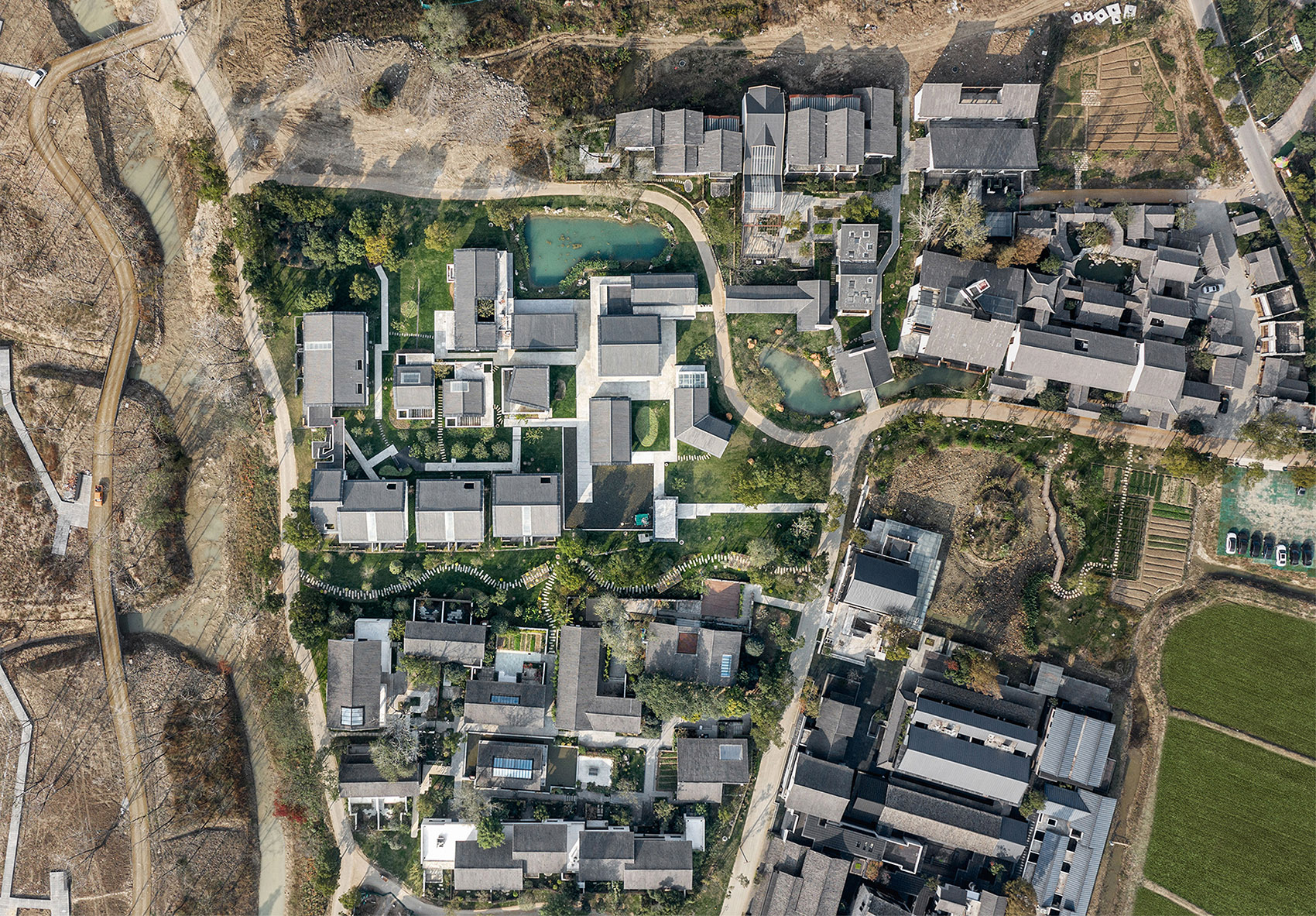
设计师通过阅读大量江淮地区的资料,从江淮地区的文化根源中获取灵感,根据当地自然气候的建造法则,以周围民居为原型进行设计。在设计过程中不局限于传统江淮建筑的外观、体量与尺度,重新组织建筑与庭院的关系,梳理动线,并根据空间新定义考虑的其使用需求,采用灵活的现代手法来丰富建筑与空间层次。
The designer obtained inspiration from the cultural roots of the Jianghuai region by reading a large number of materials in the Jianghuai region, and designed the surrounding residential buildings based on the construction rules of the local natural climate. In the design process, we are not limited to the appearance, volume and scale of the traditional Jianghuai buildings. We reorganize the relationship between the building and the courtyard, sort out the flow lines, and consider its use needs based on the new definition of space. Use flexible modern methods to enrich the building and Spatial hierarchy.
▼鸟瞰 Aerial view ©任腾

江淮地区地处长江淮河之间,地形地貌多为低山、丘陵和岗地,江淮民居结合了北方中原一带的“合院式”和徽州地区“厅井楼居式”建筑特点,平面布局上更加紧密规整,建筑装饰追求简洁素朴,大部分为单层建筑,其中少部分为双层建筑。
The Jianghuai area is located between the Yangtze River and the Huaihe River. The topography and landforms are mostly low mountains, hills and hills. The Jianghuai dwellings combine the architectural features of the “courtyard style” in the northern central plains and the “hall-well house style” architectural features in the Huizhou area. Tightly organized, the architectural decoration pursues simplicity and simplicity, most of which are single-storey buildings, and a few of them are double-storey buildings.
▼改造前项目原状 project condition before renovation ©安徽科图建筑设计院有限责任公司
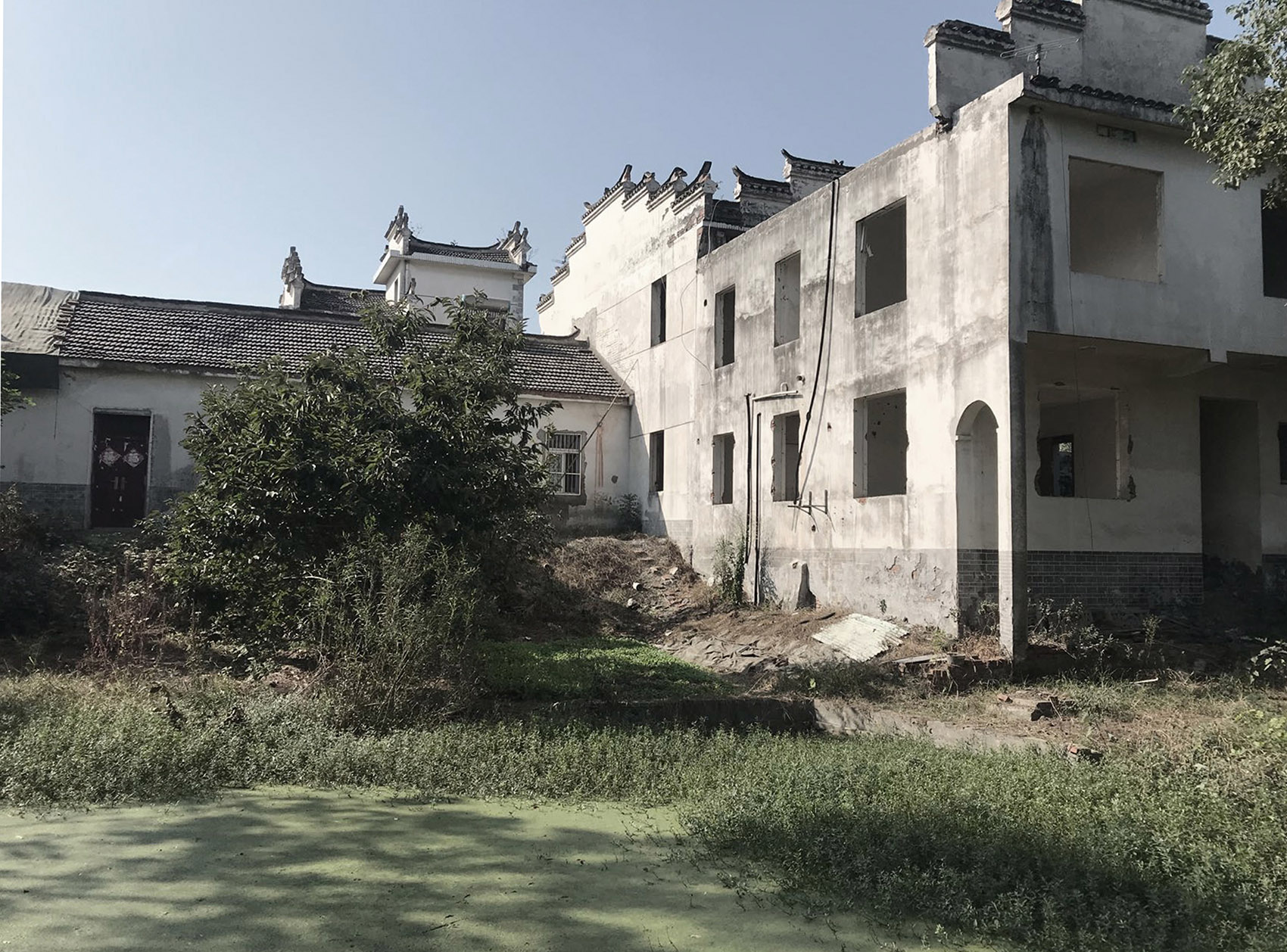

民宿整体以黑白灰为主色调。墙面为白色的外墙涂料,顶面现代简洁檐口佐以小灰瓦装饰的硬山顶,既有传统的韵味又不失现代的简约气息。
The overall color of the homestay is black, white and gray. The wall is white exterior wall paint, and the top surface is modern and simple cornice with the hard top of the mountain decorated with small gray tiles, which has the traditional charm without losing the modern simplicity.
▼黑白的建筑与天空清晰明亮 The black and white buildings and the sky are clear and bright ©任腾
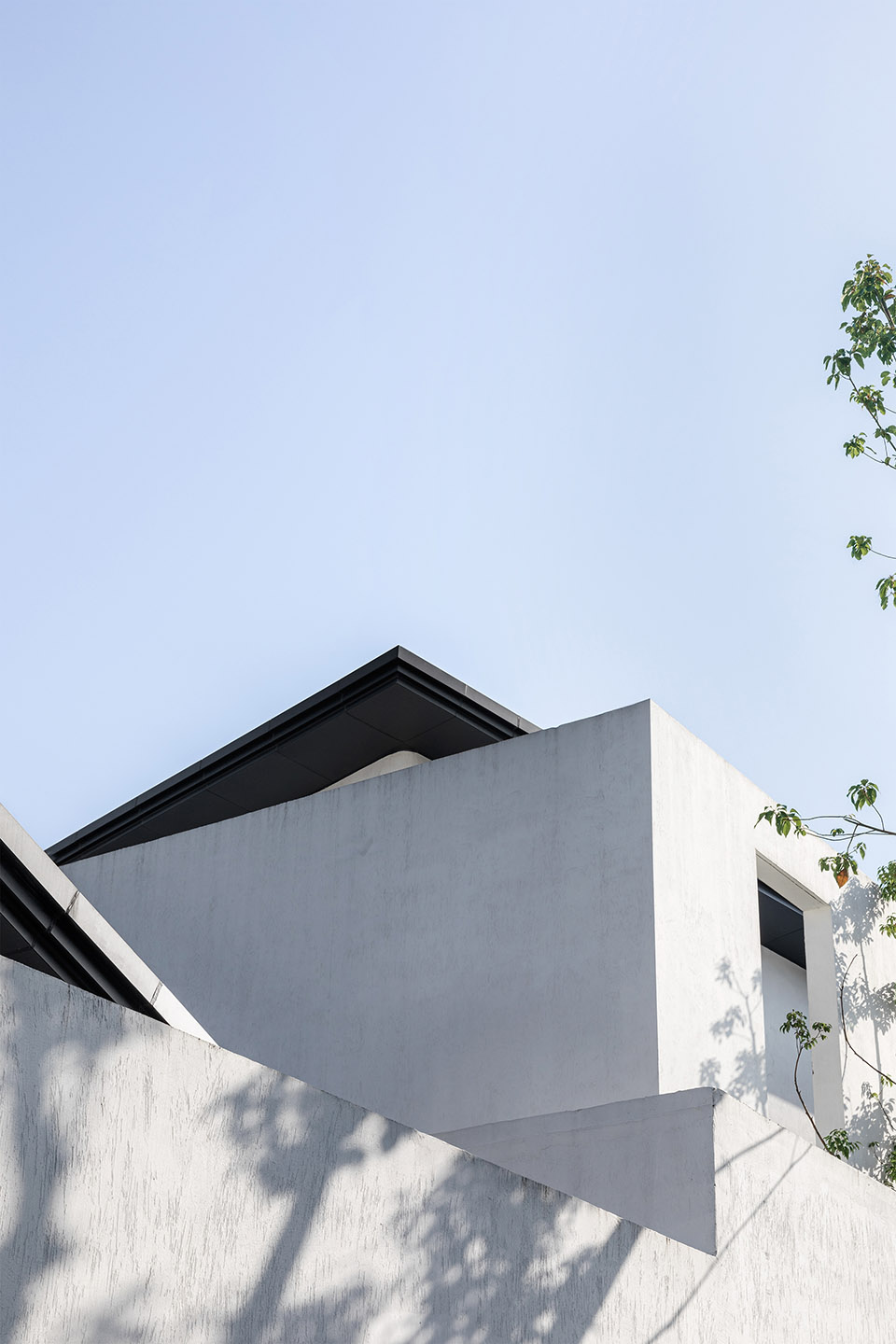
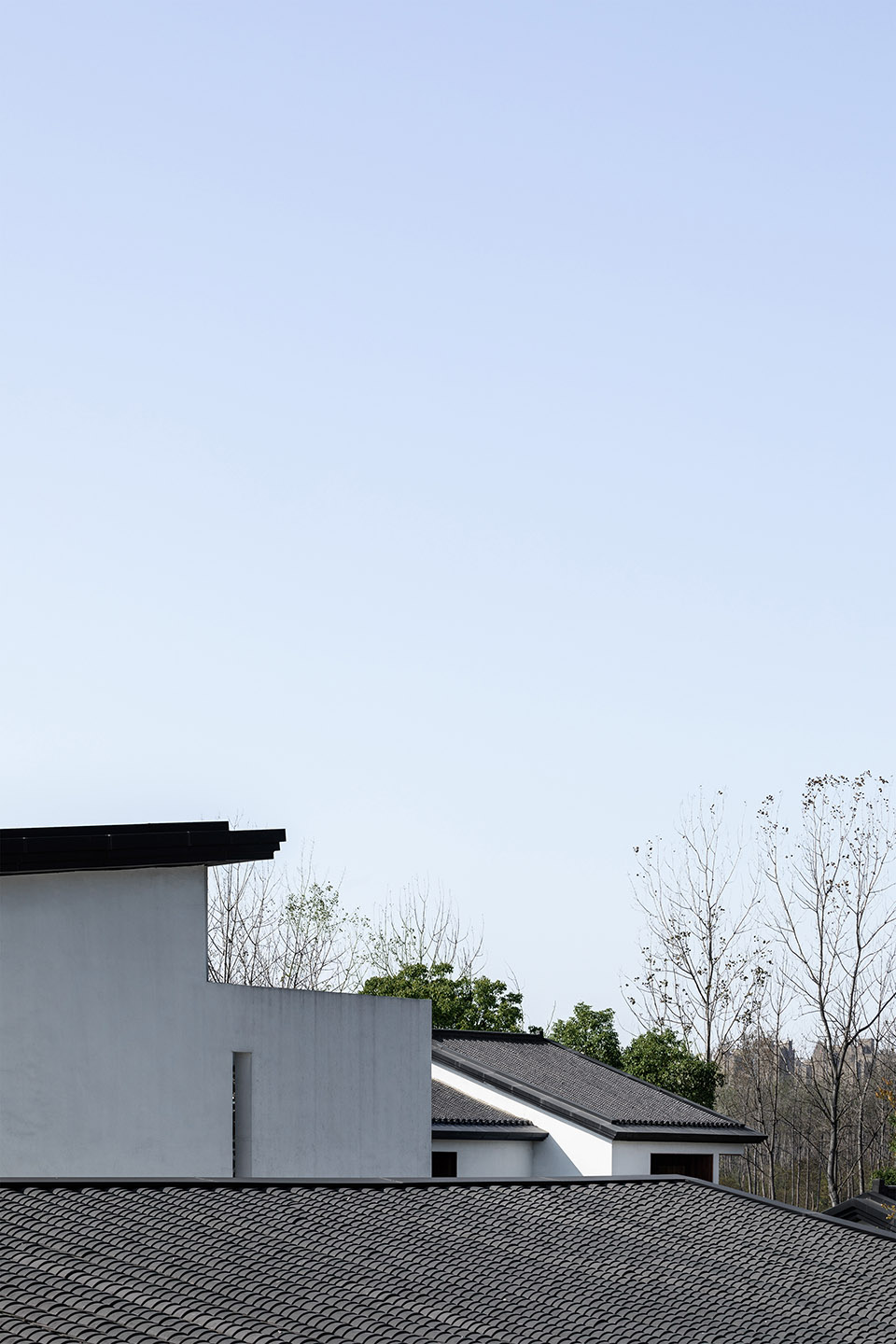
▼静谧的氛围 Tranquil atmosphere ©任腾
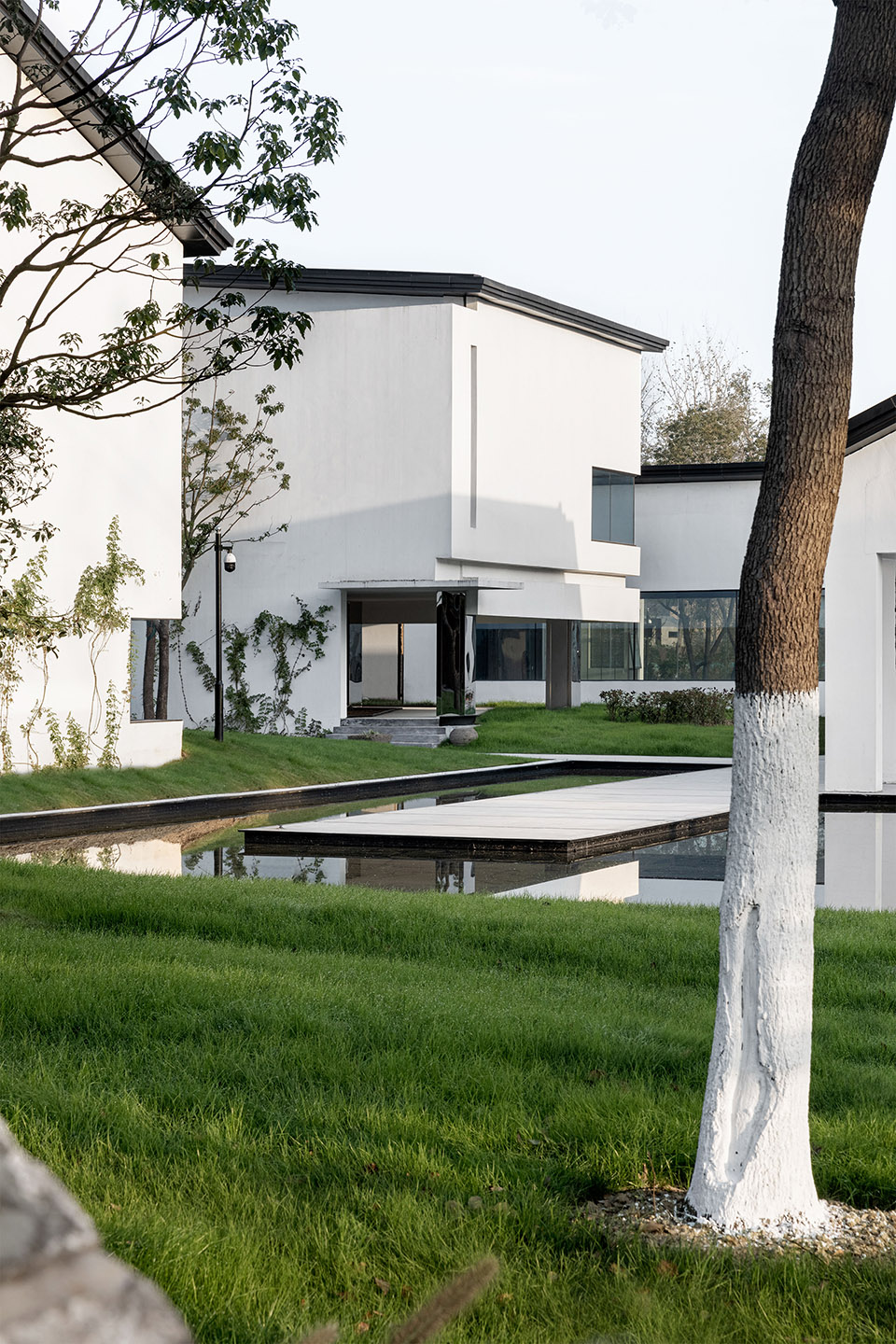
漫游汀步引导人们缓步而上,步入民宿之中。建筑主入口有一面浅水面,形成一个半环形廊道,通往民宿中心建筑“大堂吧”,代表着典型江淮建筑民居中的“堂屋”,演绎为当代民宿体验的一个复合型多功能的公共空间。连廊和青石板路嵌在不同空间形态和边界中,成为建筑之间活跃的媒介。依照设计师精心规划的路线游走,随着空间与时间的变化,步移景异,一步一景。
Roaming Tingbu guides people slowly up and into the homestay. The main entrance of the building has a shallow water surface, forming a semi-circular corridor leading to the “lobby bar” of the central building of the hotel. space. Corridors and bluestone roads are embedded in different spatial forms and boundaries, becoming active media between buildings. Walk according to the route carefully planned by the designer. With the change of space and time, the scene will change step by step, one scene at a time.
▼主入口 Main entrance ©任腾

▼镜面水映衬着蓝天 The mirrored water against the blue sky ©任腾
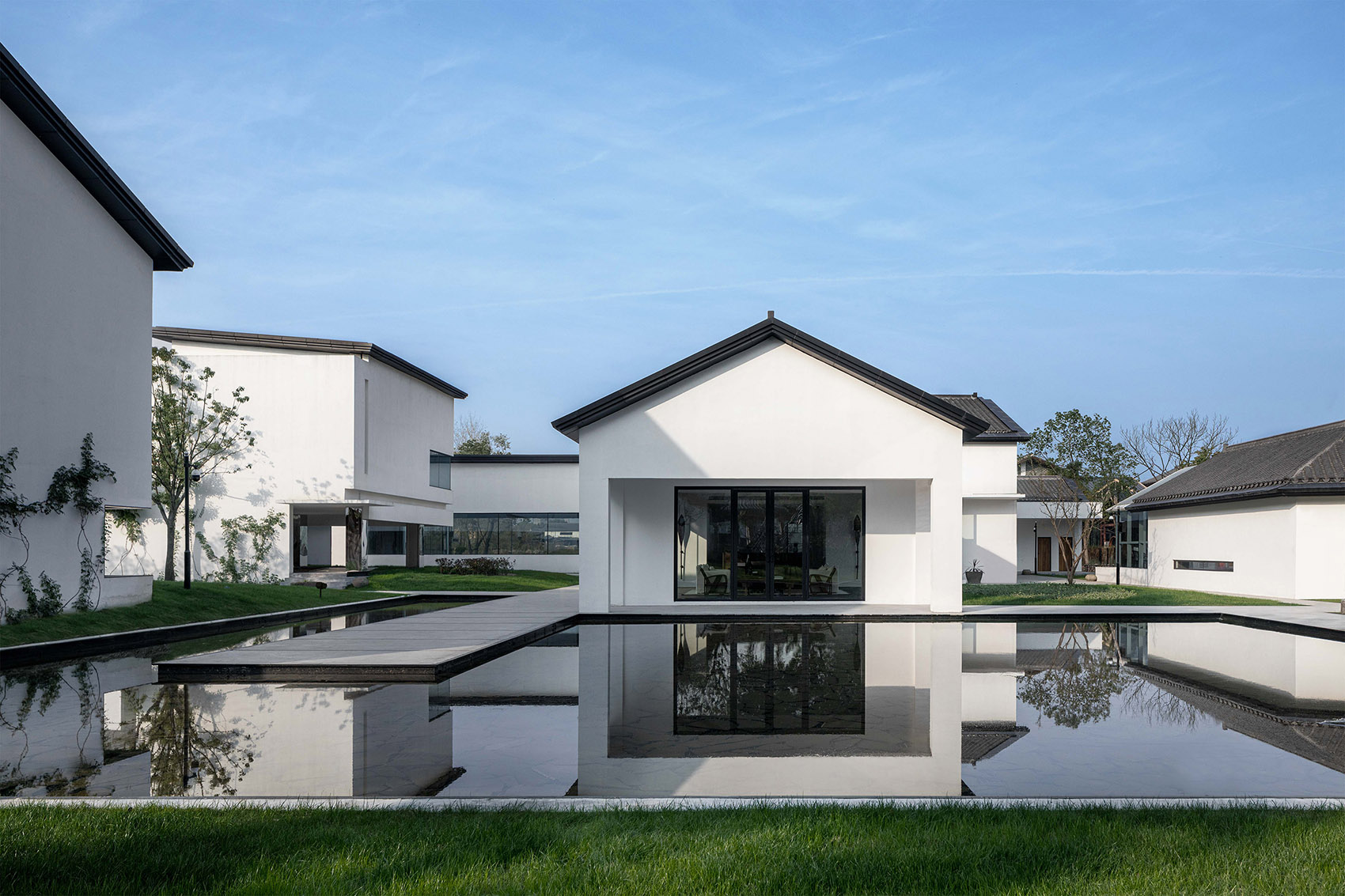
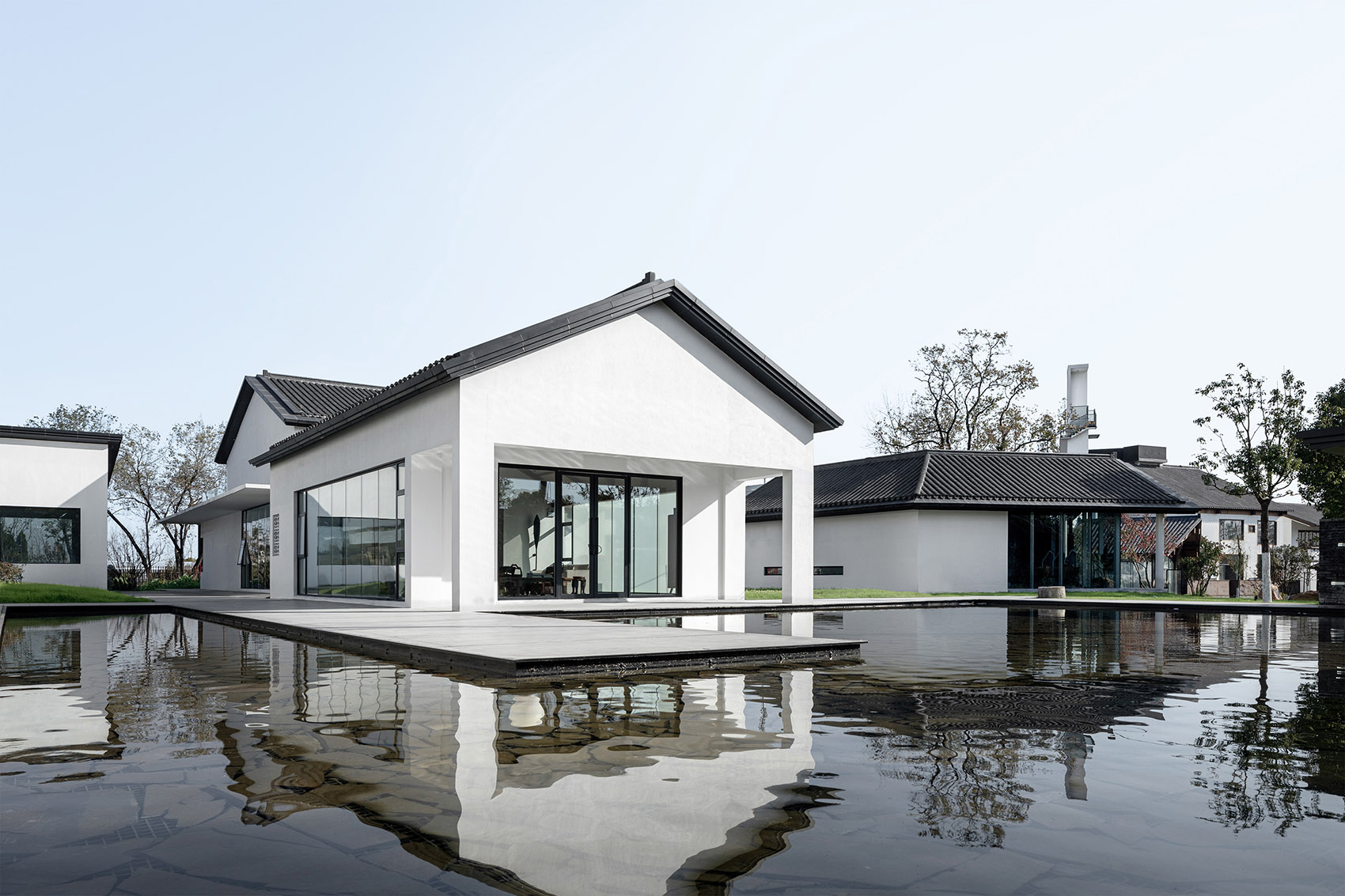
▼水池 Pool ©任腾
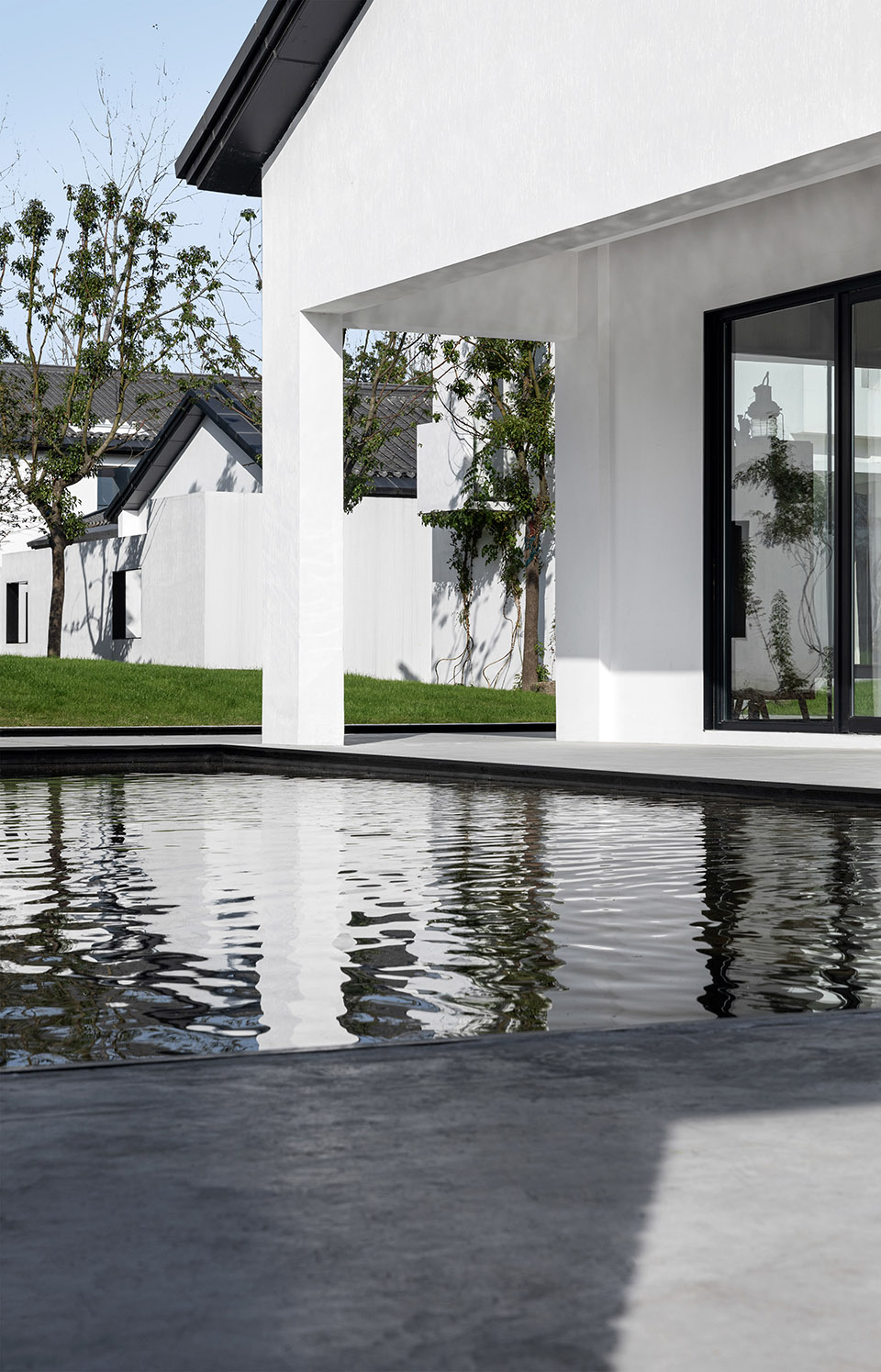
▼青石板路 Blue stone road ©任腾
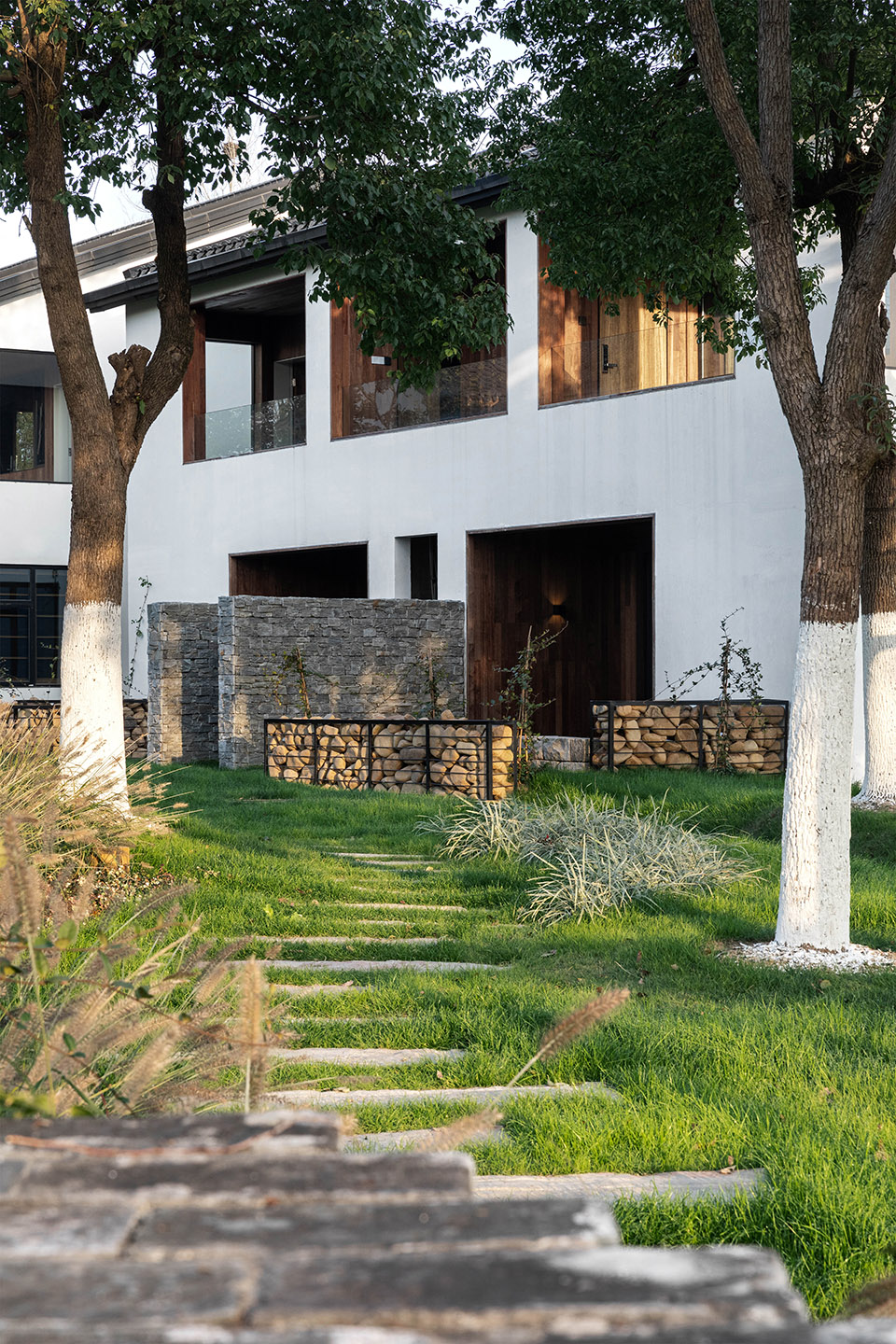
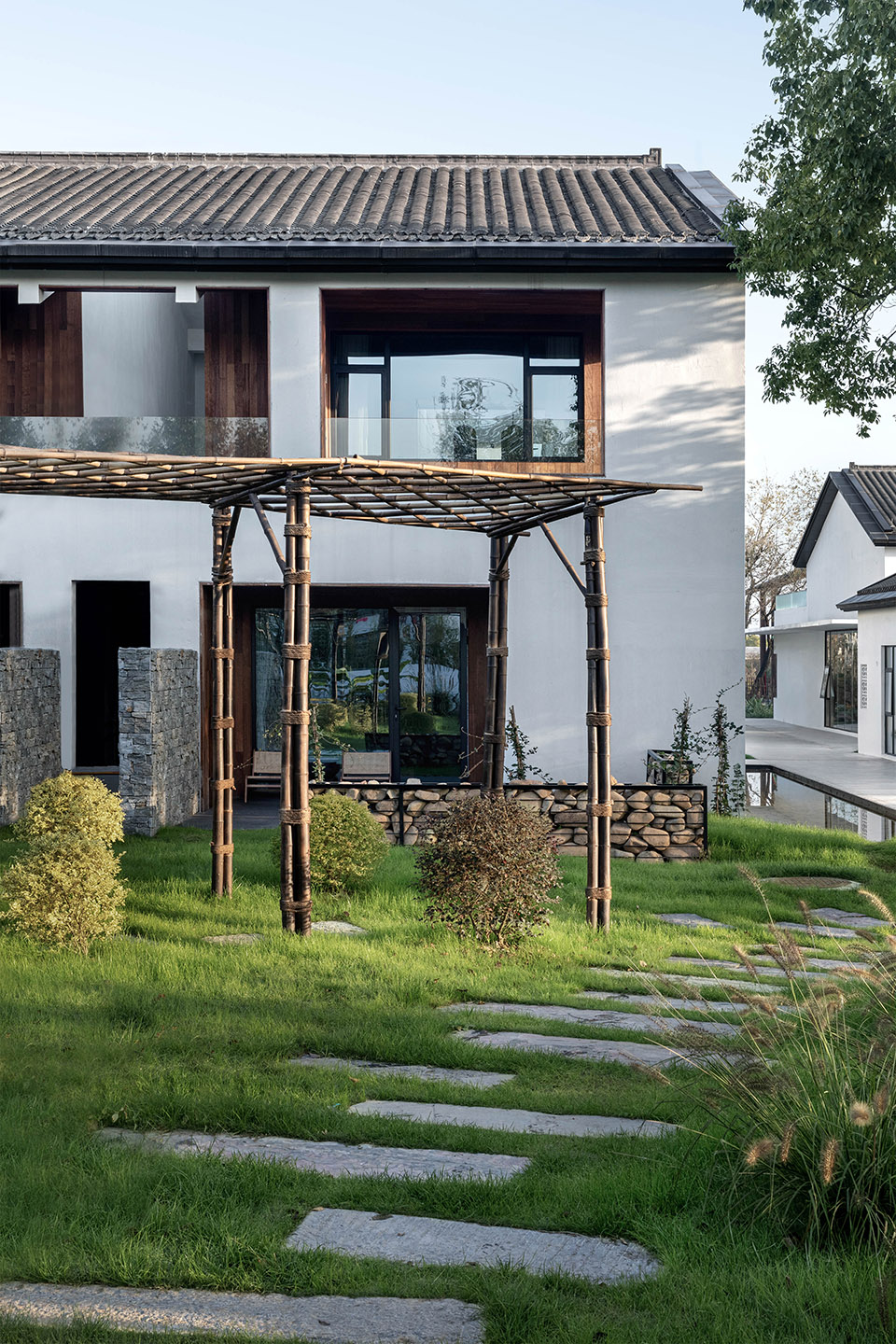
▼白丁书吧 Bai Ding book ©任腾

美术馆根据空间新定义考虑其使用需求,采用灵活的现代手法来丰富建筑与空间层次。
According to the new definition of space, the art gallery considers its use needs, and adopts flexible modern methods to enrich the building and space hierarchy.
▼民宿组团内的中心建筑美术馆 The central building art gallery in the B&B group ©任腾
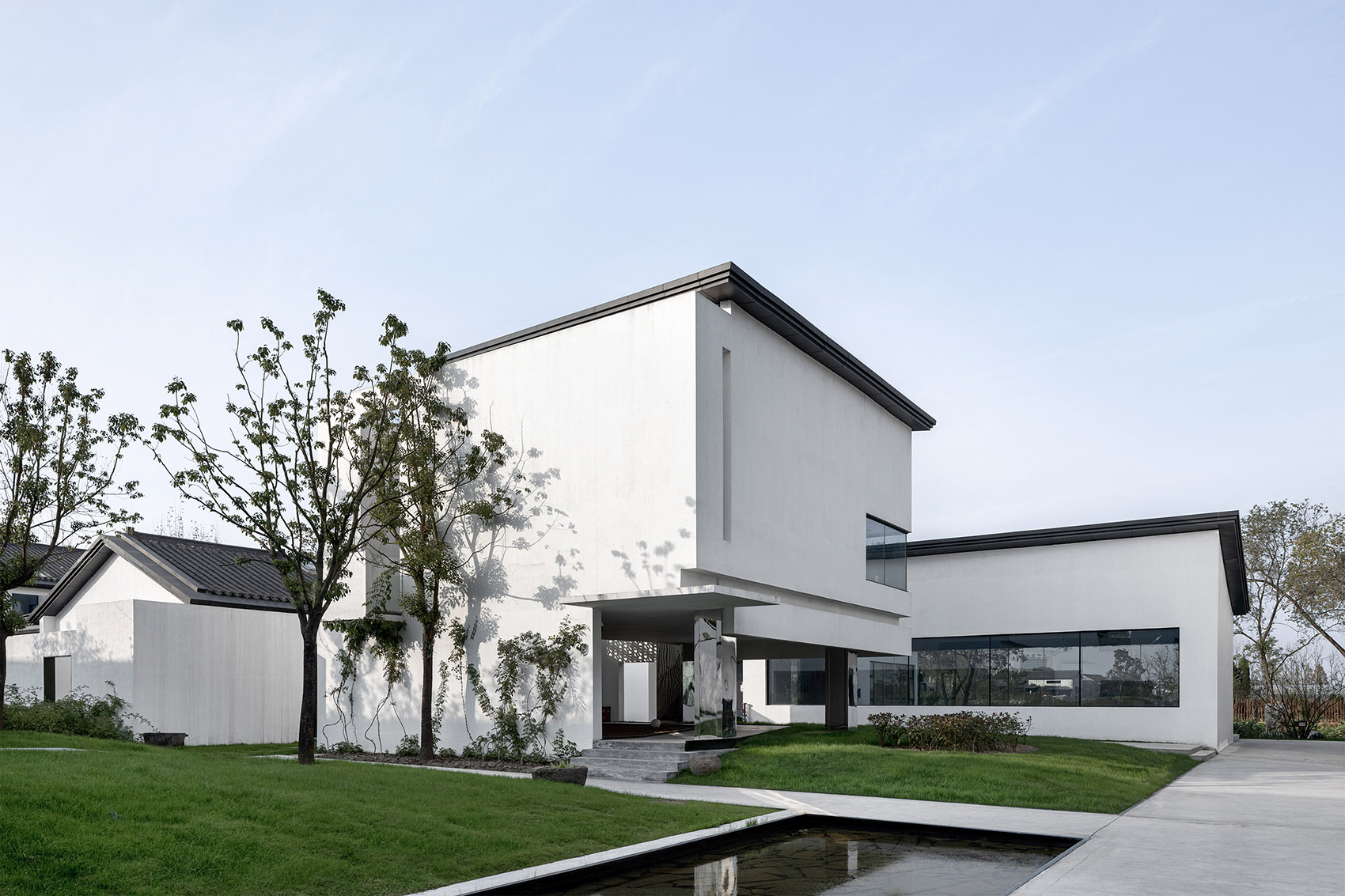
▼美术馆内部空间 Space inside the art gallery ©任腾
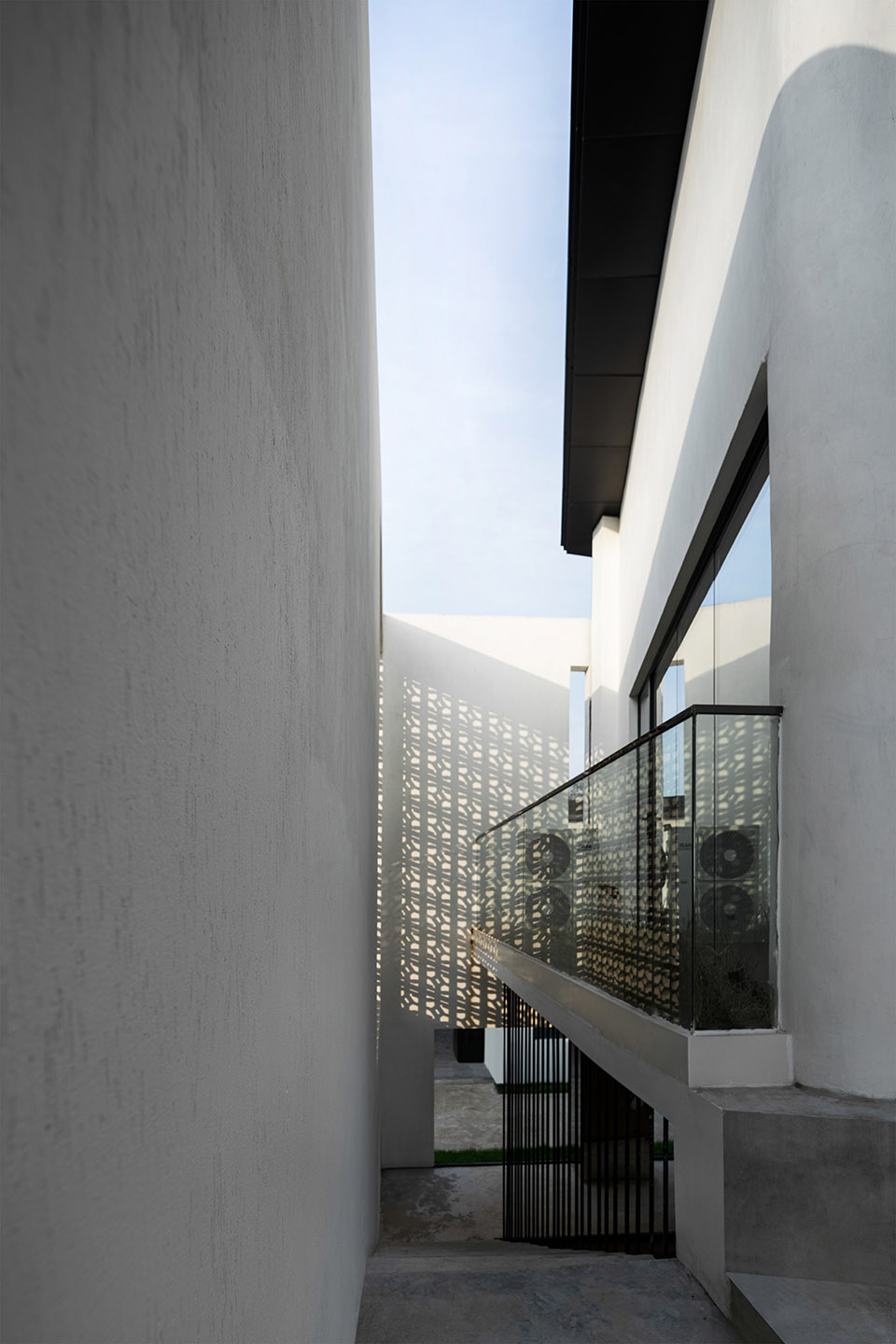
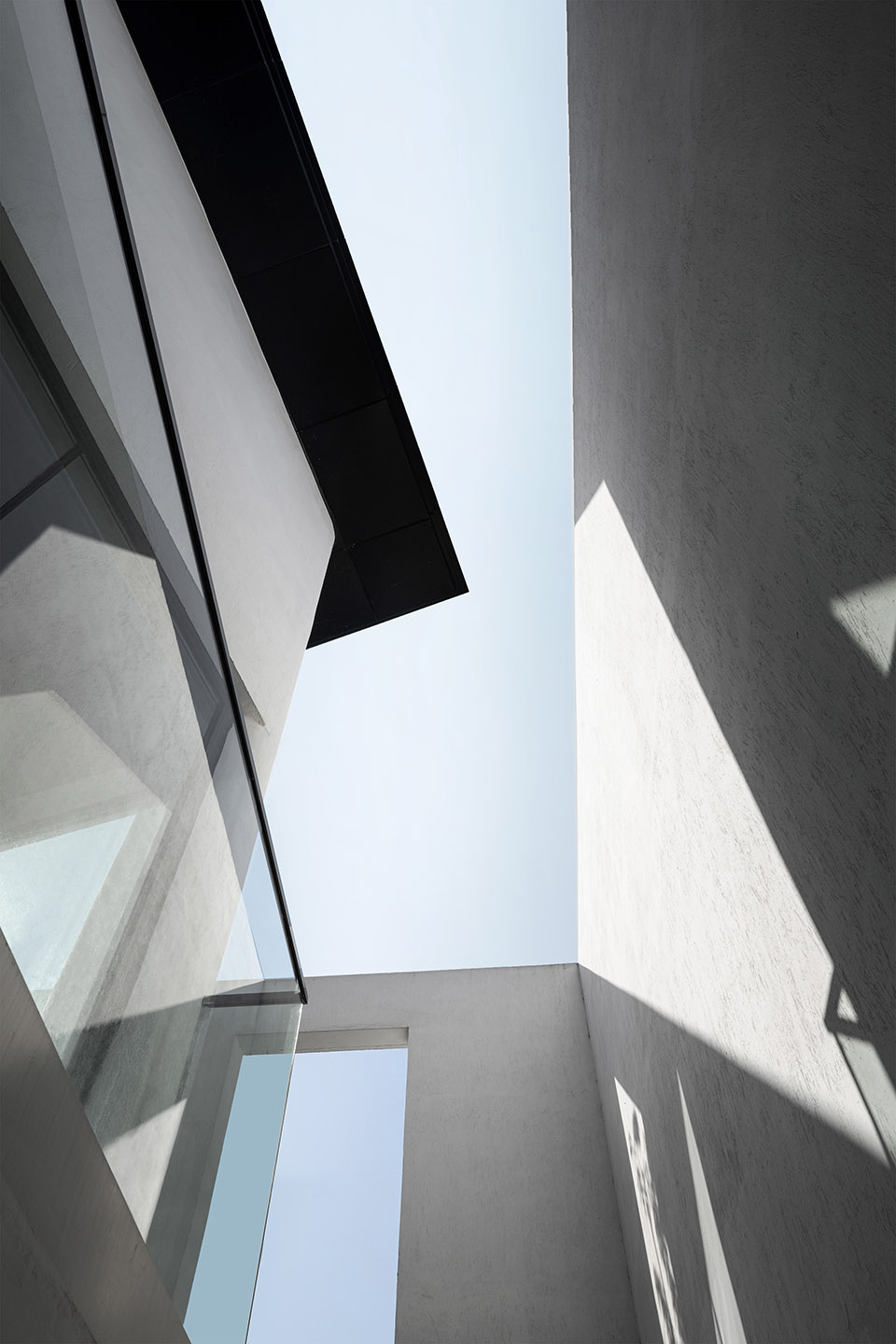
▼城市会客厅的中庭院落 The middle courtyard of the city hall ©任腾
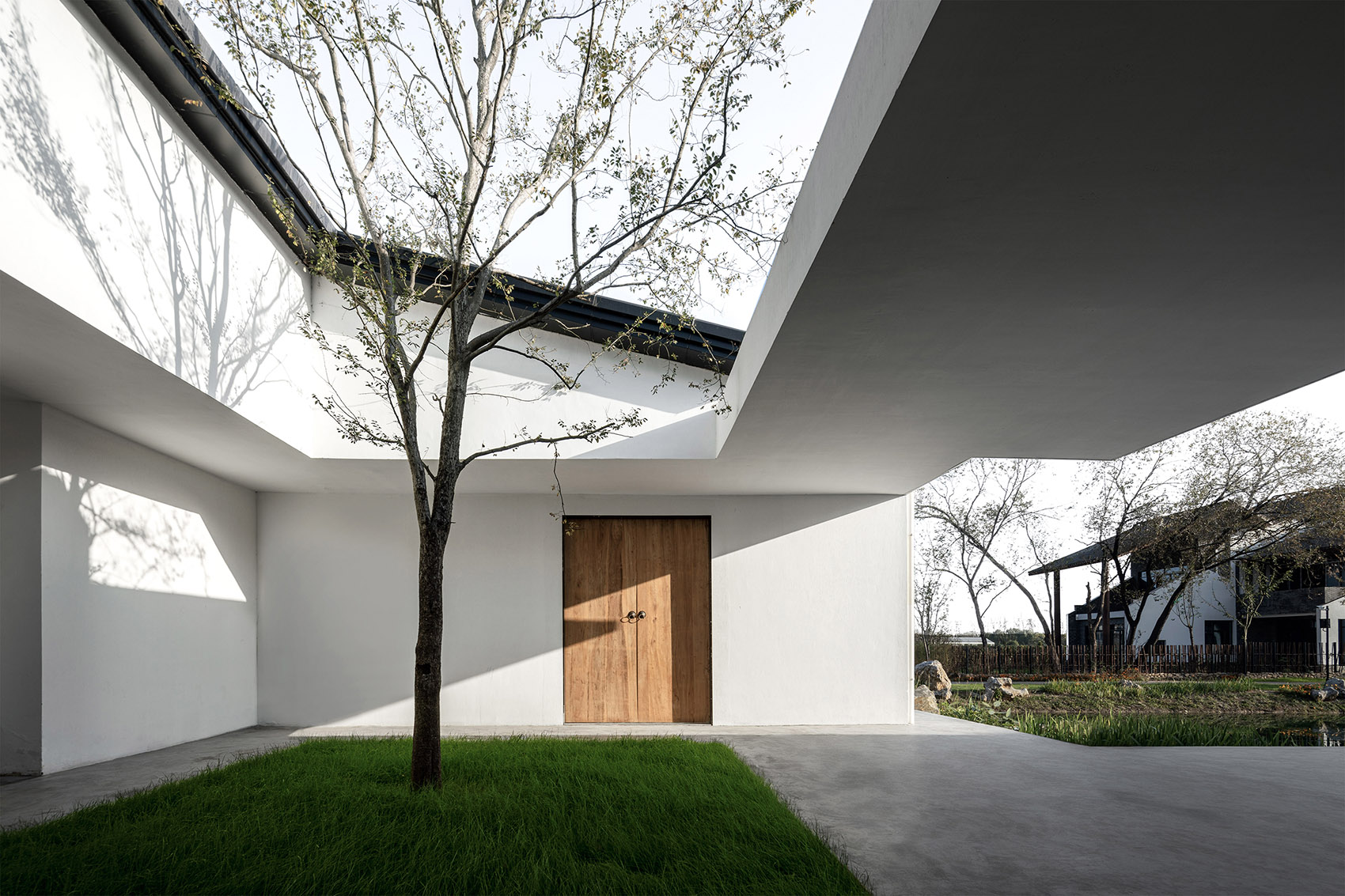
▼组团内的下沉休闲空间 Sunken leisure space in the group ©任腾
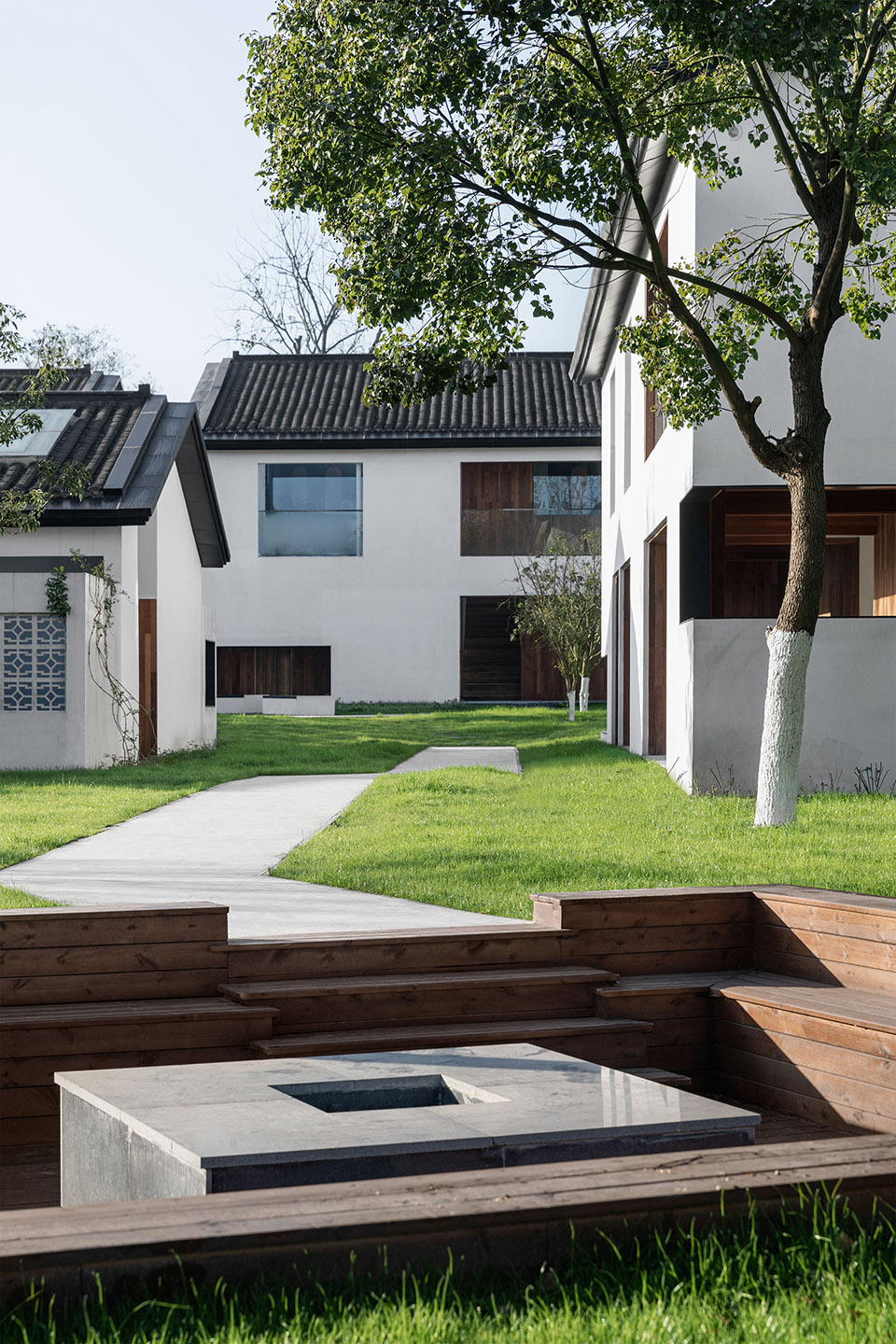
中国自古就有顺“势”而为的说法,以势建造在建筑设计中至关重要,“势”一方面是地势,另一方面则是人势。在地势上,一是要顺应当地气候,符合当地人的居住习惯;二是要顺应地面高差建造,减少对自然环境的破坏。在人势上,设计对应目标人群的定位,顺应目标人群的实际需求。项目所在原场地地面存在不规则高差,建筑设计在地势上完全顺应了地形的坡度。
Since ancient times, there has been a saying in China that the “trends” should be followed. Building with potentials is very important in architectural design. In terms of topography, one is to adapt to the local climate and conform to the living habits of the locals; the other is to conform to the height difference of the ground to reduce damage to the natural environment. In terms of human potential, design the positioning corresponding to the target group and conform to the actual needs of the target group. There are irregular height differences on the ground of the original site where the project is located, and the architectural design fully conforms to the slope of the terrain on the terrain.
▼剖面图 Section view ©安徽科图建筑设计院有限责任公司

在传统江淮建筑的基础上,为了避免建筑的沉闷感,在大片的墙面上开了大片玻璃长窗,使建筑内部变得通透且有变化。
On the basis of the traditional Jianghuai architecture, in order to avoid the dullness of the building, a large piece of glass was opened on the large wall. Long windows make the interior of the building transparent and changeable.
▼玻璃长窗 Long windows ©任腾

▼大堂吧 Lobby ©任腾
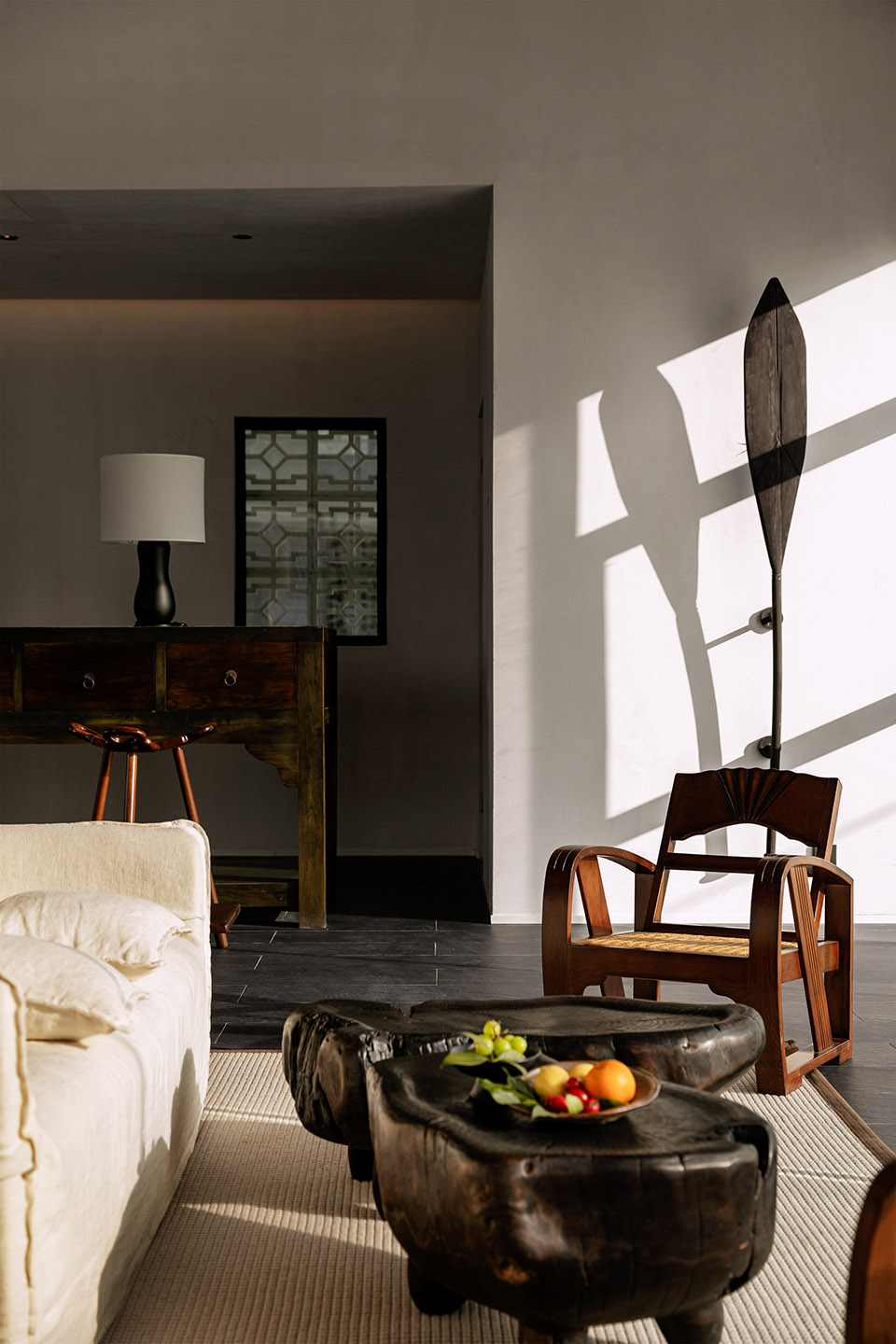
▼客房 Room ©任腾
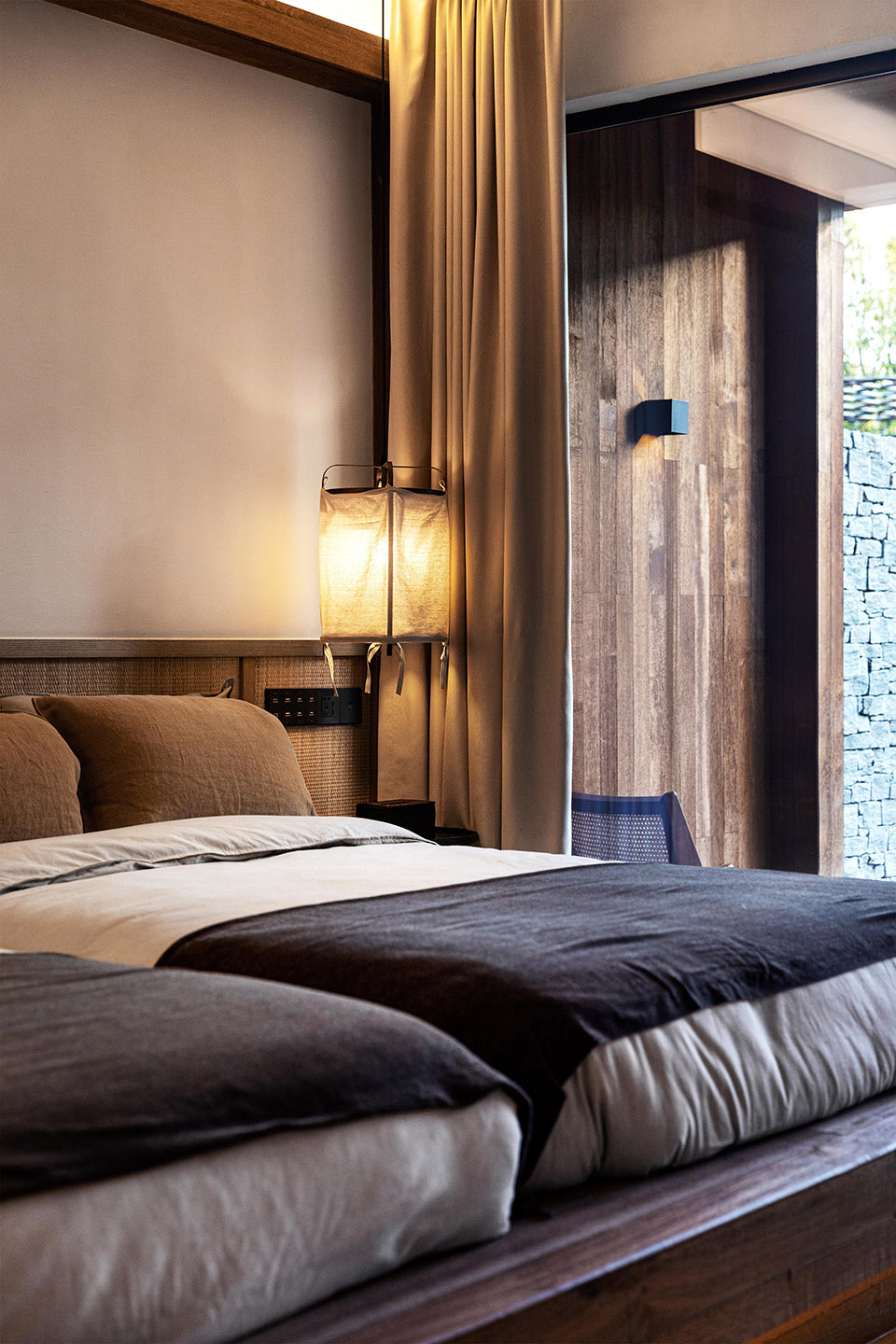
俗话说“一方水土养一方人”, 民宿的设计主要是让游客体验独特的当地文化和自然风光,尽管江淮地区建筑受南北两方的建筑影响都很大,存在很多相似之处,但是经过不断地发展江淮建筑也形成了自己的特色,本次乡建项目以江淮民居在地性表达作为切入点,挖掘江淮民居在地性价值,总结设计手法,为江淮建筑设计的发展提供了微薄力量。
As the saying goes, “One side of the water and soil breeds the other side”, the design of the homestay is mainly to allow tourists to experience the unique local culture and natural scenery. Although the buildings in the Jianghuai area are greatly influenced by the buildings of the north and south, there are many similarities, but after continuous The local development of Jianghuai architecture has also formed its own characteristics. This township construction project takes the local expression of Jianghuai dwellings as an entry point, excavates the local value of Jianghuai dwellings, summarizes design techniques, and provides meagre strength for the development of Jianghuai’s architectural design.
▼施工照片 Construction photos ©安徽科图建筑设计院有限责任公司
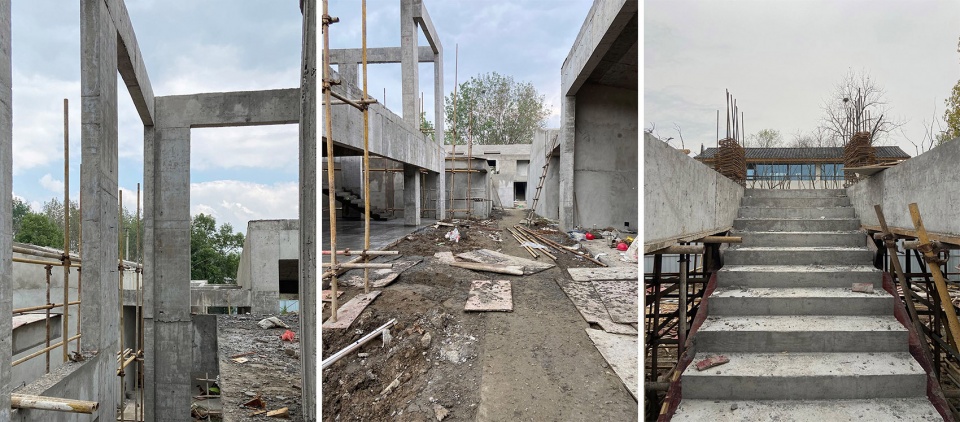
▼工作模型 Working mode ©安徽科图建筑设计院有限责任公司
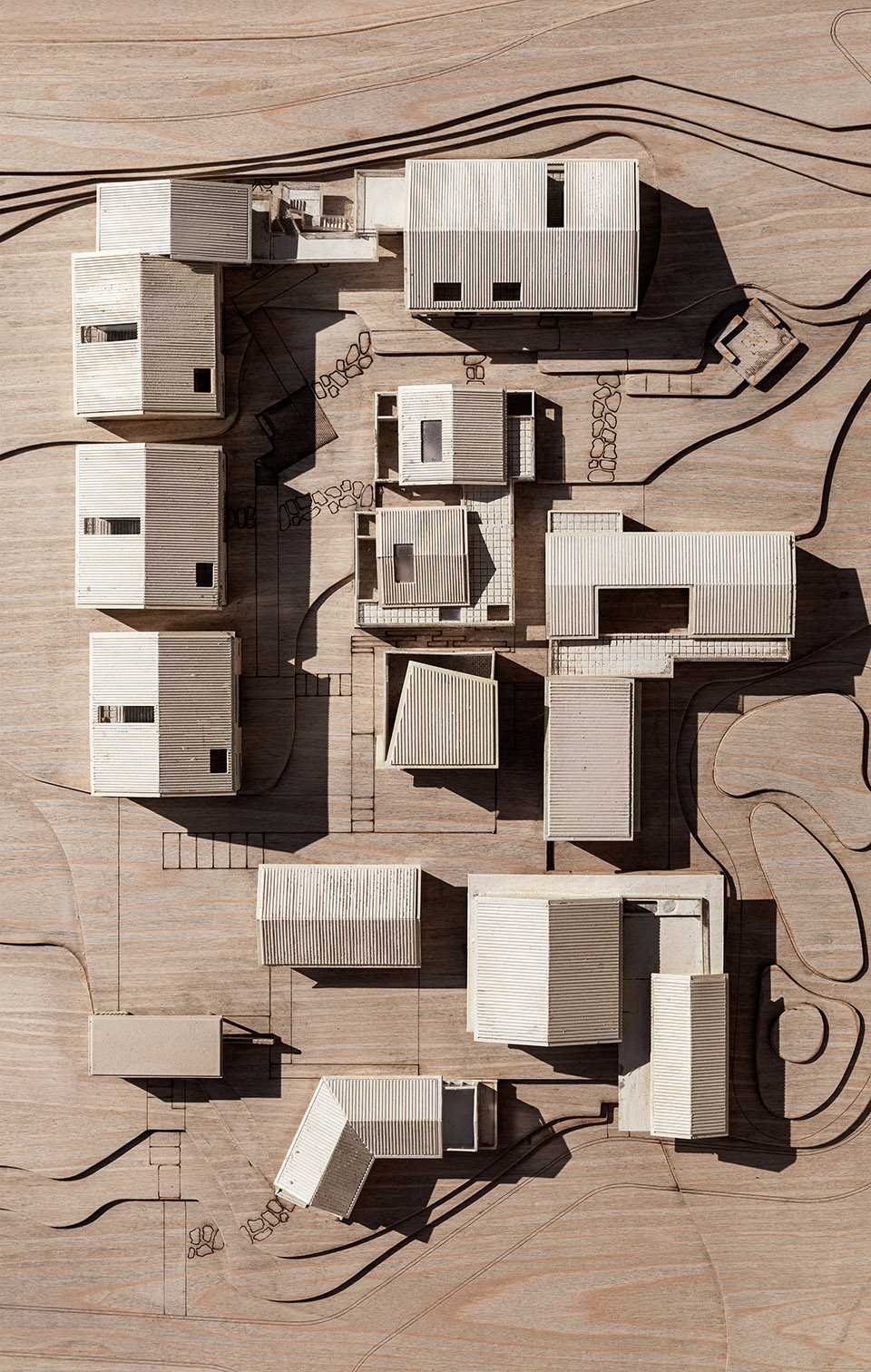
▼轴测图 Axonometric ©安徽科图建筑设计院有限责任公司
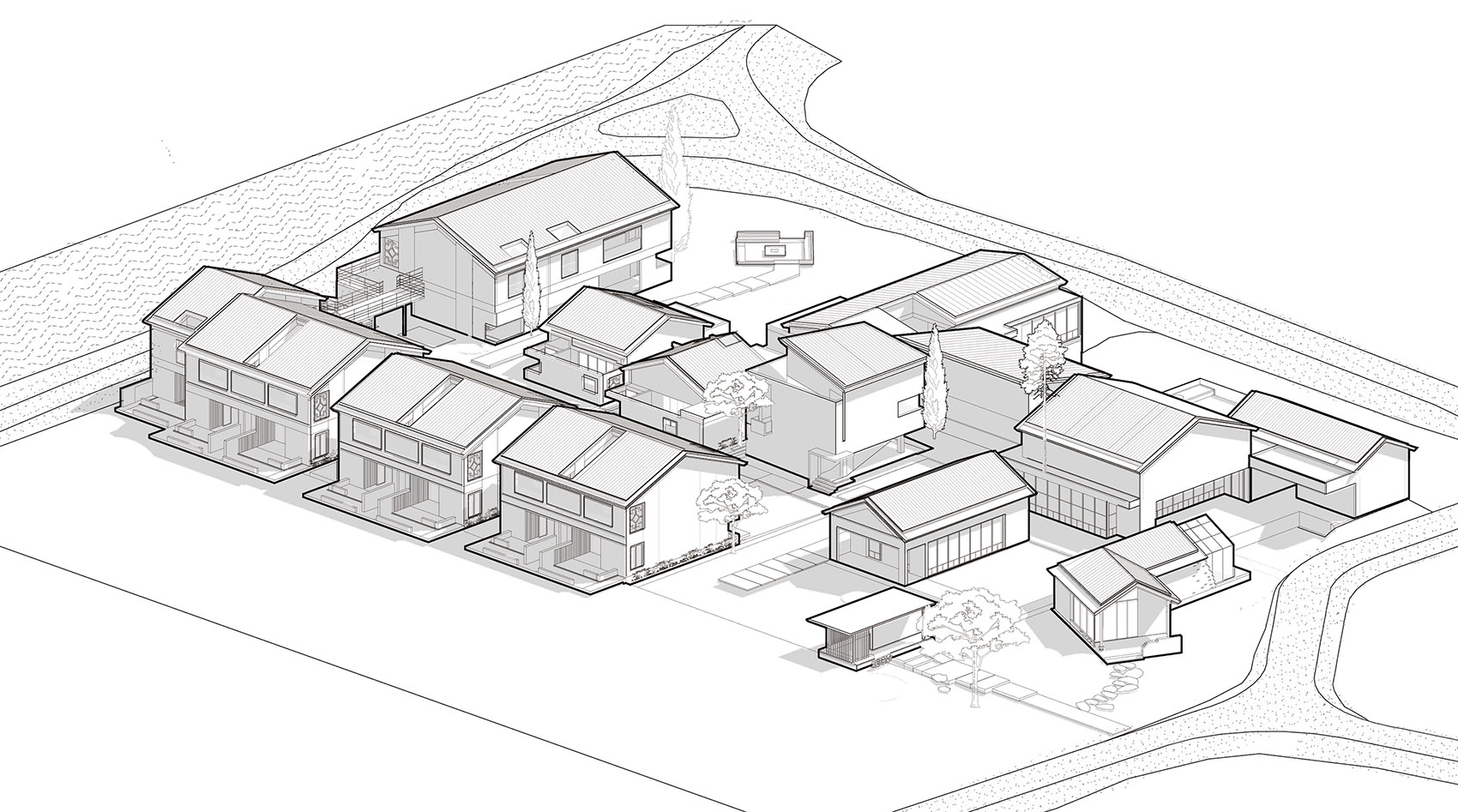
▼一层平面图 First floor plan ©安徽科图建筑设计院有限责任公司
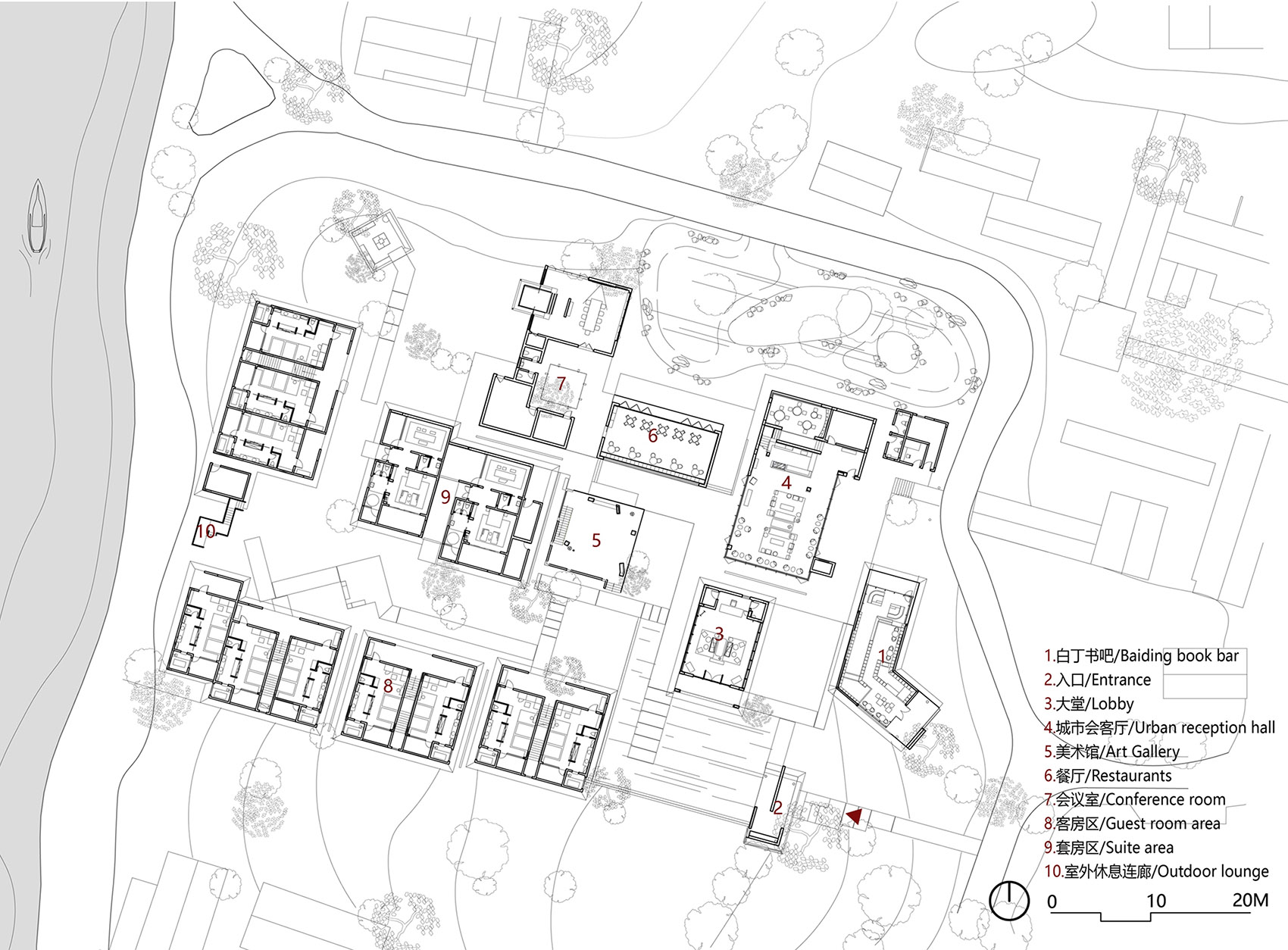
▼二层平面图 Second floor plan ©安徽科图建筑设计院有限责任公司
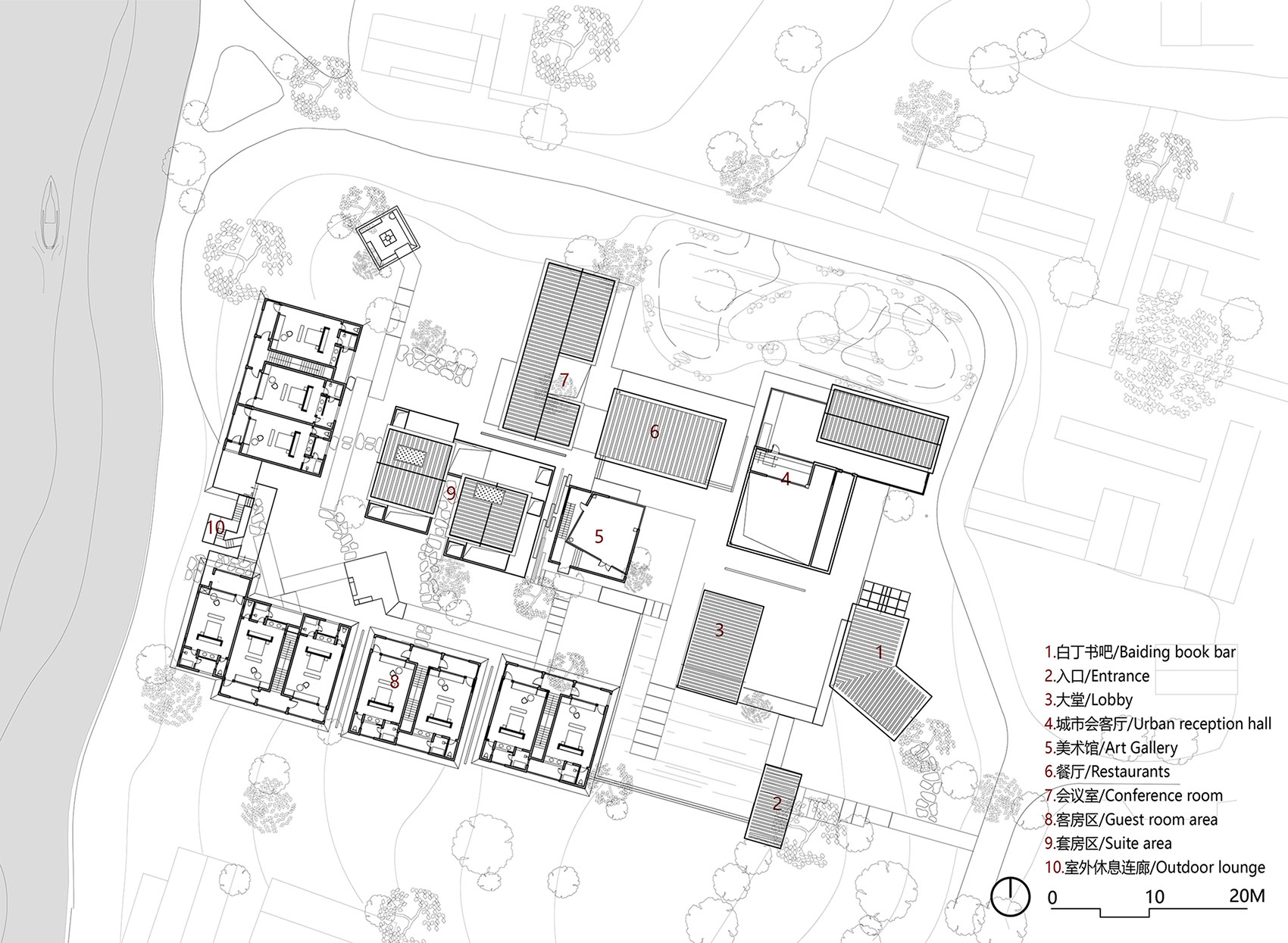
▼项目更多图片
